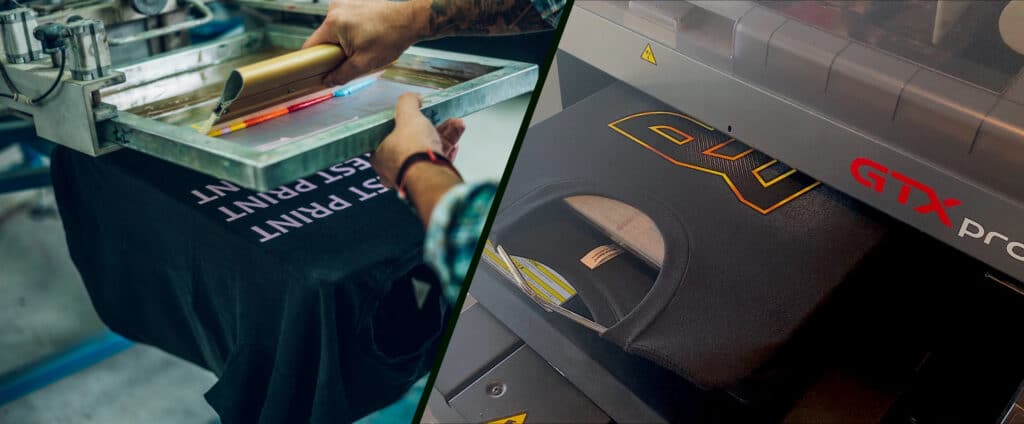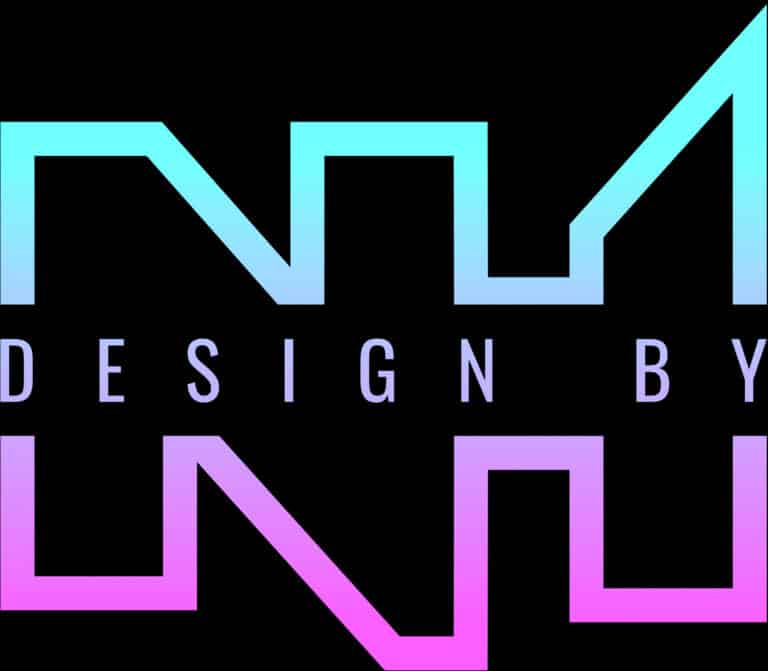
Screen Printing vs. Direct to Garment Printing
As a business owner or someone looking to create custom designs on apparel, you might be wondering which printing method is the best for your project. With so many options available, it can be overwhelming to choose the right one. In this article, we will focus on two popular printing methods: Direct-to-Garment (DTG) printing and Screen Printing. We will discuss the pros and cons of each method to help you make an informed decision.
Before we delve into the differences between DTG printing and Screen Printing, let’s first define these methods.
Direct-to-Garment Printing (DTG)
DTG printing is a process where the printer applies the ink directly onto the garment using a specialized inkjet printer. The printer sprays the ink onto the fabric, and the ink is then cured using heat to make it permanent. This process is best for small to medium-sized runs and complex designs with multiple colors.
Screen Printing
Screen printing, also known as silk screening, is a process where ink is pushed through a stencil or mesh screen onto the garment. The stencil or mesh screen is created by burning the image onto the screen using a light source. This process is best for larger runs and simple designs with fewer colors.
Now that we have a basic understanding of both printing methods, let’s take a closer look at the pros and cons of each.
Direct-to-Garment Printing (DTG)
Pros:
High-Quality Prints: DTG printing offers high-quality, detailed prints with vibrant colors. The ink is absorbed by the fibers of the garment, creating a soft and comfortable feel.
Ideal for Small Orders: DTG printing is perfect for small to medium-sized orders because the printer can print small quantities at a lower cost than traditional screen printing.
Customization: DTG printing allows for customization, making it easy to create unique designs for each garment. You can print photographs, intricate designs, and even gradients with ease.
Eco-Friendly: DTG printing uses water-based inks, which are environmentally friendly and safe for the user.
Cons:
Limited Fabric Selection: DTG printing is best suited for 100% cotton or cotton-blend fabrics. It does not work well on polyester or nylon fabrics.
Higher Cost: DTG printing is more expensive than traditional screen printing, especially for larger orders.
Longer Production Time: DTG printing takes longer to produce than traditional screen printing because each garment is printed individually.
Screen Printing
Pros:
Ideal for Large Orders: Screen printing is ideal for large orders because the process is efficient, and the cost per garment is lower than DTG printing.
Versatility: Screen printing can be used on a wide range of fabrics, including cotton, polyester, nylon, and more.
Long-Lasting Prints: Screen printed designs are long-lasting and can withstand repeated washing and drying without fading or peeling.
Cost-Effective for Simple Designs: Screen printing is cost-effective for simple designs with fewer colors, making it perfect for text-based designs and logos.
Cons:
Limited Color Options: Screen printing is limited to a maximum of 6-8 colors per design, making it difficult to create complex designs with multiple colors.
Less Detail: Screen printing is not ideal for intricate designs or photographs. The ink is applied in layers, which can lead to less detail and definition in the final print.
Not Ideal for Small Orders: Screen printing is not cost-effective for small orders because the cost per garment is higher than DTG printing.
Environmentally Harmful: Screen printing uses solvent-based inks, which can be harmful to the environment and the user.
Now that we have discussed the pros and cons of each printing method, let’s talk about which method is right for your project.
Choosing the Right Printing Method
When deciding which printing method to use, there are a few factors to consider, including the type of design, the fabric of the garment, the quantity of garments needed, and the budget.
If you have a complex design with multiple colors and require a small to medium-sized order, DTG printing is the best option. DTG printing allows for customization and can create high-quality, detailed prints with vibrant colors. However, if you require a large order with a simple design, screen printing is the better option. Screen printing is more cost-effective for larger orders and is best suited for simple designs with fewer colors.
If you are printing on cotton or cotton-blend fabrics, DTG printing is the ideal choice. However, if you need to print on a wider range of fabrics, including polyester and nylon, screen printing is the better option.
When it comes to budget, DTG printing is more expensive than traditional screen printing, especially for larger orders. If cost is a significant factor in your decision, screen printing is the more cost-effective option.
Conclusion
When it comes to choosing the right printing method for your project, it ultimately comes down to the type of design, the fabric of the garment, the quantity of garments needed, and the budget. Both DTG printing and screen printing have their pros and cons, and the best option will depend on your specific needs.
At Design by NH, we offer a range of printing methods, including Direct-to-Garment, Direct-to-Film, Screen Printing, and Heat Transfer Vinyl. Our team of experts can help you choose the right printing method for your project and provide high-quality prints at an affordable price.
Direct-to-Garment printing is ideal for small to medium-sized orders with complex designs, while screen printing is best suited for larger orders with simple designs. Consider the type of fabric, the quantity of garments needed, and your budget when choosing the right printing method for your project. At Design by NH, we are here to help you make the best decision and provide you with high-quality prints that meet your needs.




